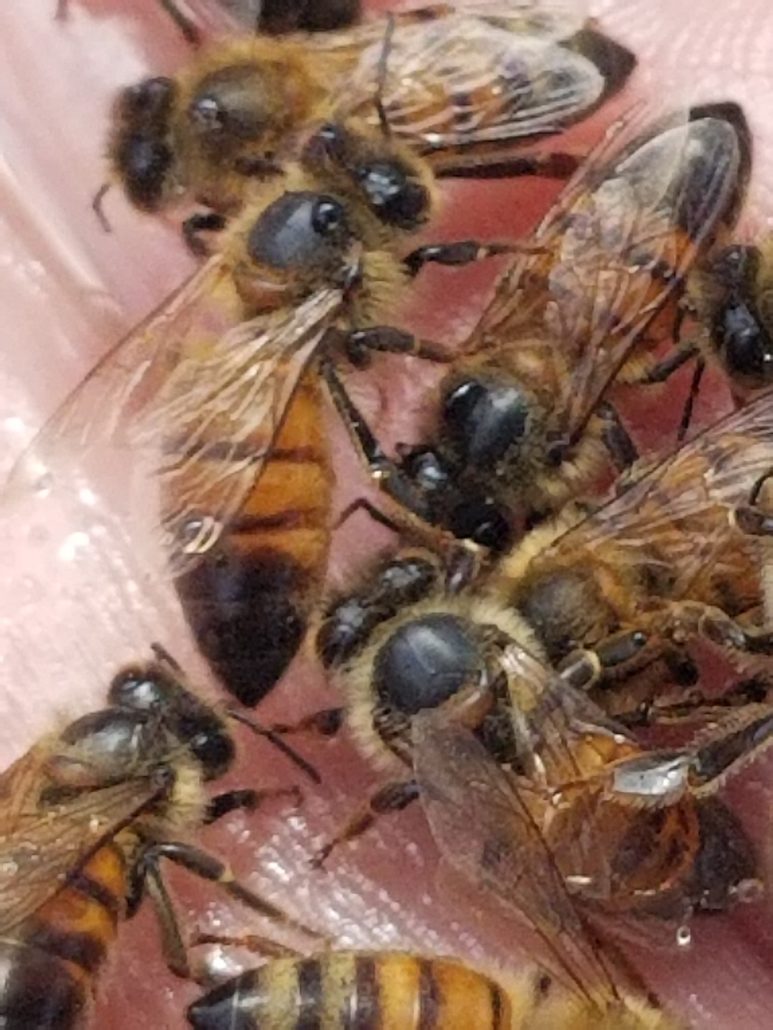Hand-feeding Bees
So, a few years ago, I made a serious go at learning about bees. I studied them, I went on “smoke test” visits with bee-keepers. Chris got me hives for Christmas, and I tried… but I did not succeed, repeatedly, with bee-keeping. However, it’s given me an entirely different view on bees, and I love watching them going about their bee-siness in the garden, pollinating and nectaring and even gathering tree sap for propolis.

I learned that when nectar flow is scarce, particularly in our climate in late fall and early spring, bees are hungry. They will end up in your soda can, or trying to eat the jam out of your sandwich. When Chris found a couple of bees on dinner plates in the sink (we live with the house all open in early spring, until the mosquitoes get bad) we knew it was Bee Feeding Time. They’re warm enough to go out and forage, but not much is blooming for them to eat.
We mix 1:1 sugar syrup (one cup plain granulated sugar, one cup water) and put it in a tub. We put green weeds in there, so that if they get INTO the syrup, they can climb out. And the back yard becomes alive with little buzzing golden bodies.
Foraging bees are totally non-aggressive. The only way to get stung by one, is to accidentally crush her – they won’t fight or even argue, when they’re out hunting for nectar.
I didn’t take a video of how you FINISH feeding the bees… it’s kind of a gentle flick of the hand, dislodging the bees, and they fly away. They don’t chase you. I did have to brush a couple of bees off my pants legs, but they were just resting there.
It is surprising to me, how SPECIFIC their nectar-locating behavior is. There are scout bees, and they wander all over looking for nectar, and then there are foraging bees, who follow the very detailed directions from the scout bees and go direct to the source and then bee-line (yes, that’s where it comes from – they fly in a straight line) back to the hive. Zip, zip, zip. If you move your hand, or the tub of syrup, a foot… it’s not going to get any new bees until a scout bee relays the news back at the hive. They will land in the wrong spot for several minutes, stumbling around until they find the nectar, or going back hungry.
Amusingly, once the scout bees hear that there’s a big, pink-skinned nectar source, they stop and lick you, even when there’s no sugar. Like, just say for instance, you decide to lay out in the sun and get some Vitamin D when you’re done feeding the bees… you will get bee-licked.

Leave a Reply
Want to join the discussion?Feel free to contribute!